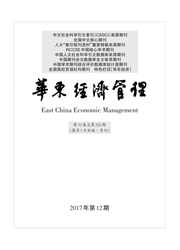

 中文摘要:
中文摘要:
文章基于1997-2012年30个省级地区数据构建固定效应模型,选用“医疗卫生财政支出决算额”测算医疗卫生财政支出水平,研究分析医疗卫生财政支出对经济增长贡献的时间、空间差异及原因。结果显示:医疗卫生财政支出对经济增长存在明显时空差异,空间上表现为西部地区医疗卫生财政支出的贡献度最高,东部次之,中部最低,时间上呈现出“由低到高,日趋平稳”的变化趋势。政府应明确自身职能责任,通过加大西部地区医疗卫生财政支出力度,提高财政支出效率等途径,整合全社会卫生资源,完善医疗卫生资源分配机制。
 英文摘要:
英文摘要:
The paper, based on 30 provincial panel data from 1997 to 2012, buihls a fixed-effects model and selects "the fi nal amount of health care expenditure" to measure the level of tile health care budget, and makes an analysis of the tempo ral-spatial differences on China's health care expenditure contribution to the economic gruwth anti the reasons for the differenc es. The resuhs indicate that there is a obvious temporal-spatial difference between health care expenditure and economic growth. The western region's health care expenditure contribution rate is the highest, and the eastern area is higher than the central region. The temporal analysis shows the trends of "from low to high, the increasingly stable" . The government shouht clarify its functional responsibilities to perfect health care resource allocation mechanism, by increasing health care expendi ture in the western region, improving the efficiency of fiscal spending, integrating health resources of the whole society and perfecting the allocation meehanism of health care resources.
 同期刊论文项目
同期刊论文项目
 同项目期刊论文
同项目期刊论文
 期刊信息
期刊信息
